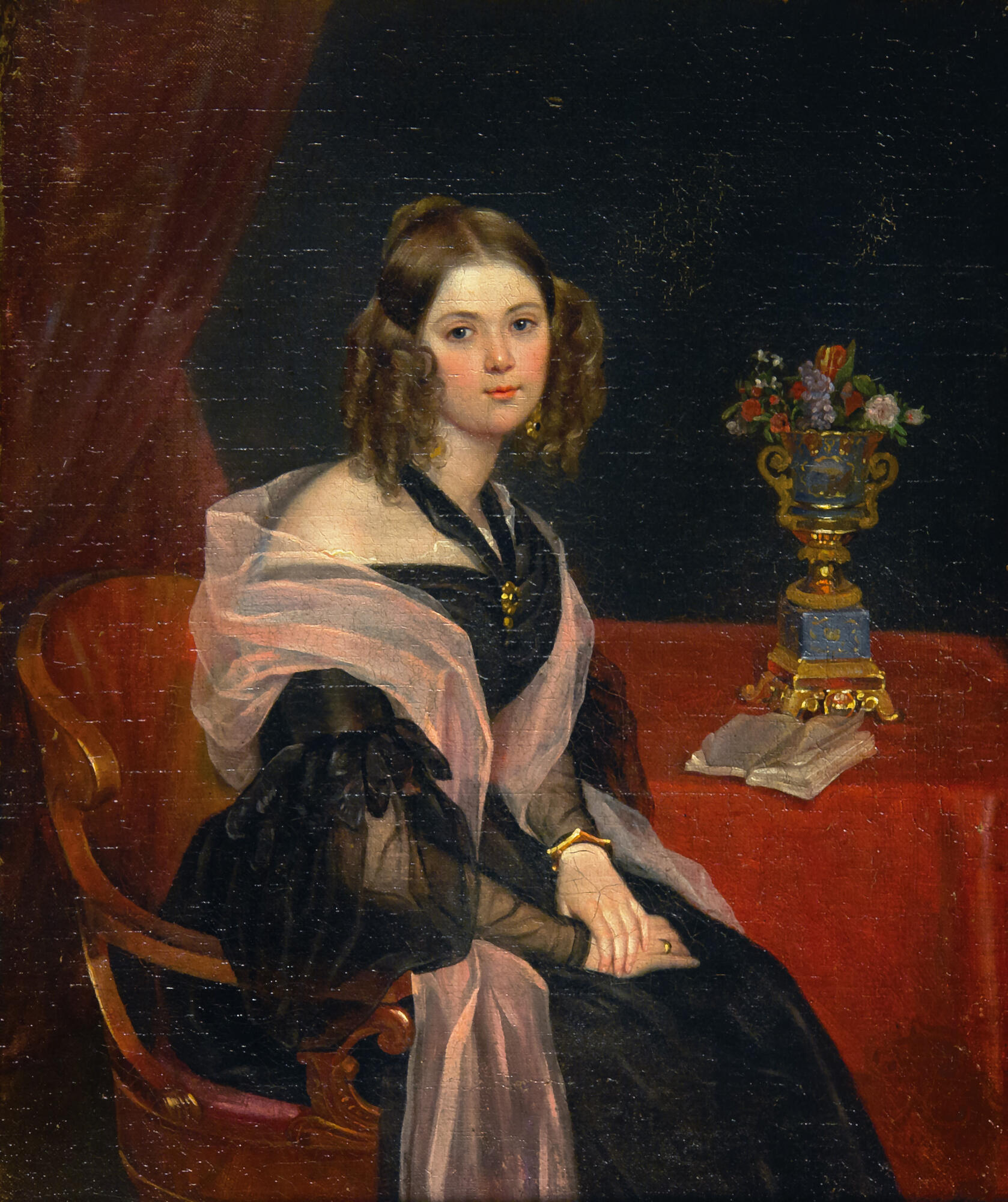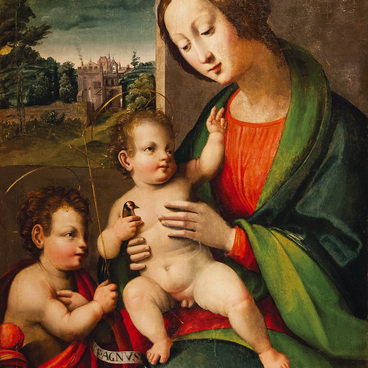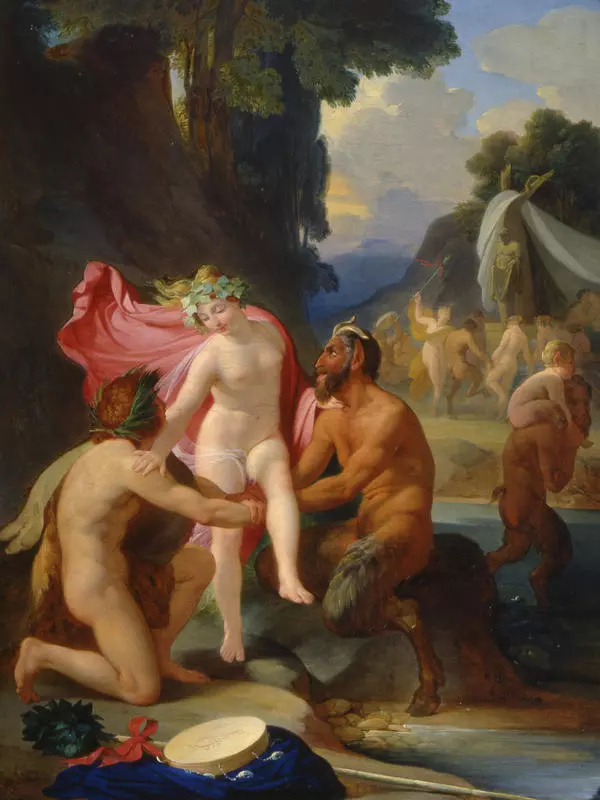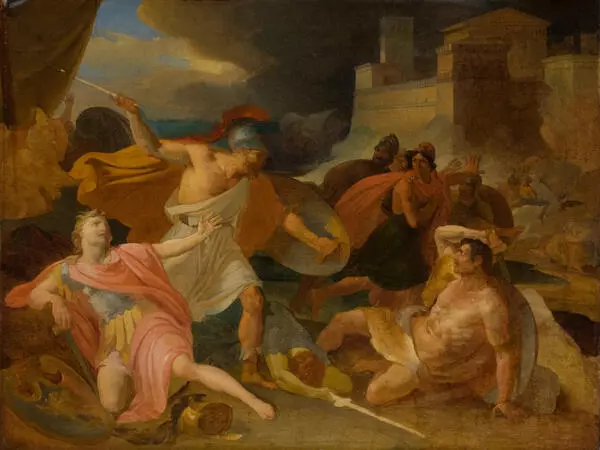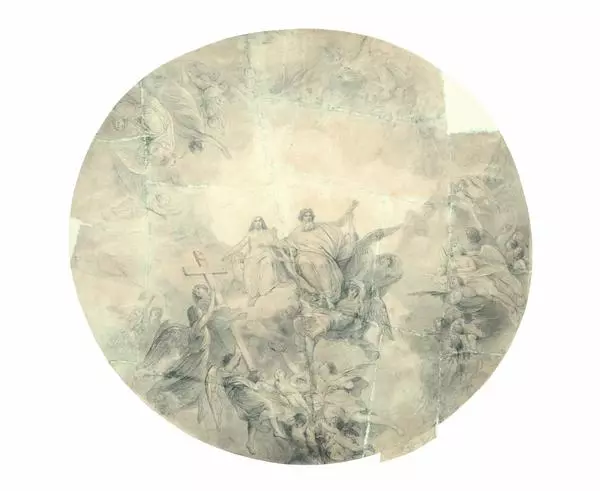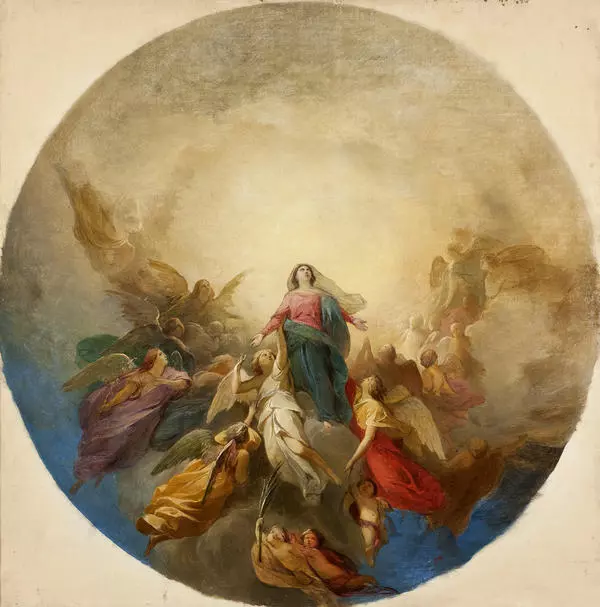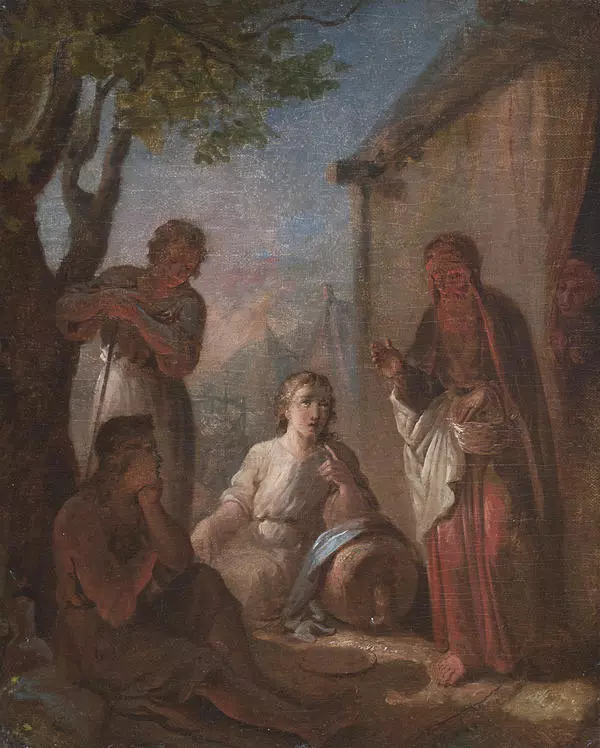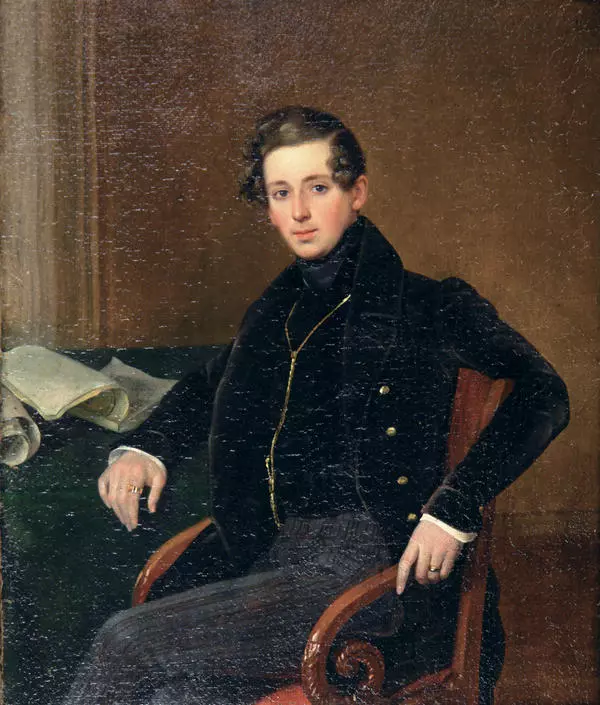Pyotr Vasilievich Basin was a painter, muralist and engraver, who created history and landscape compositions and painted canvases inspired by biblical plots. He was born in 1793 in St. Petersburg. He started attending drawing classes at the Academy of Fine Arts as a non-matriculated student in 1811. In 1813, he enrolled in the Academy. He studied under the professor Vasily Kozmich Shebuyev. In 1818, the painting “Christ Driving the Money Changers from the Temple”, earned him a gold medal and the right to travel abroad at the expense of the Academy.
Pyotr Vasilievich lived in Italy from 1819 to 1830. He made copies of Raphael’s Vatican frescoes “The Deliverance of Saint Peter” and “The Mass at Bolsena”. During that period, he created the paintings “Faun Marsyas Teaches Olympus to Play the Flute”, “Susanna Caught by the Elders in the Bath”, “The Robber who Kidnaps a Girl from her Mother”, “Frascati Laundresses”, “Italian Landscape”, “The Environs of Rome”, portraits of Maria Naryshkina and family portraits of prince Sergey Gagarin and Sylvester Shchedrin, as well as a number of landscapes. In 1831, he received the title of academician for the painting “Socrates Saves Alcibiades in the Battle of Potidaea”.
After returning to St. Petersburg, he mainly painted works on religious themes: in 1837–1839 he created a number of compositions for the Kazan Cathedral, and in 1843–1846 and 1853–1856 — for St. Isaac’s Cathedral. Later, in the 1870s, he painted about 40 works inspired by mythology for the Winter Palace.
Pyotr Vasilievich also painted various portraits, including those depicting Hans Karl von Diebitsch (his Russian name was Ivan Ivanovich Diebitsh-Zabalkansky) and Mikhail Illarionovich Kutuzov-Smolensky. He also painted a “Self-Portrait with Brother”.
In 1831, he began teaching at the Academy of Fine Arts, and in 1836 became a professor. Nikolai Nikolaevich Ge studied under the tutorship of Pyotr Vasilievich Basin at the Imperial Academy of Arts.
In the portrait from the collection of the Kaluga Museum, Maria Petrovna Valueva is depicted sitting in an armchair at the table. Strict in composition and restrained in its color palette, the work is painted in an academic manner, with carefully rendered details. This is an example of an aristocratic portrait image designed to be displayed in a small room.
Pyotr Vasilievich lived in Italy from 1819 to 1830. He made copies of Raphael’s Vatican frescoes “The Deliverance of Saint Peter” and “The Mass at Bolsena”. During that period, he created the paintings “Faun Marsyas Teaches Olympus to Play the Flute”, “Susanna Caught by the Elders in the Bath”, “The Robber who Kidnaps a Girl from her Mother”, “Frascati Laundresses”, “Italian Landscape”, “The Environs of Rome”, portraits of Maria Naryshkina and family portraits of prince Sergey Gagarin and Sylvester Shchedrin, as well as a number of landscapes. In 1831, he received the title of academician for the painting “Socrates Saves Alcibiades in the Battle of Potidaea”.
After returning to St. Petersburg, he mainly painted works on religious themes: in 1837–1839 he created a number of compositions for the Kazan Cathedral, and in 1843–1846 and 1853–1856 — for St. Isaac’s Cathedral. Later, in the 1870s, he painted about 40 works inspired by mythology for the Winter Palace.
Pyotr Vasilievich also painted various portraits, including those depicting Hans Karl von Diebitsch (his Russian name was Ivan Ivanovich Diebitsh-Zabalkansky) and Mikhail Illarionovich Kutuzov-Smolensky. He also painted a “Self-Portrait with Brother”.
In 1831, he began teaching at the Academy of Fine Arts, and in 1836 became a professor. Nikolai Nikolaevich Ge studied under the tutorship of Pyotr Vasilievich Basin at the Imperial Academy of Arts.
In the portrait from the collection of the Kaluga Museum, Maria Petrovna Valueva is depicted sitting in an armchair at the table. Strict in composition and restrained in its color palette, the work is painted in an academic manner, with carefully rendered details. This is an example of an aristocratic portrait image designed to be displayed in a small room.
